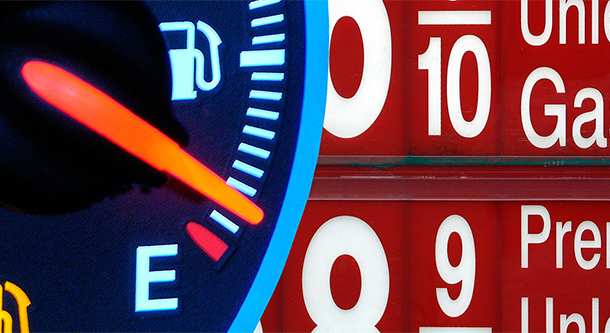
The national gas price average has been steadily decreasing for nearly two weeks dropping from the year-to-date high of $2.61 (on February 5) to today’s national average of $2.53. Motorists in nearly every state are paying less on the week with Midwest and Southern states seeing the largest price drops at the pump. Hawaii (+2 cents) and Indiana (+1 cent) were the only states to see increases.
“The question isn’t how low will they go, but how long will we see prices decline,” said Jeanette Casselano. “A handful of major refineries are undergoing maintenance. If production slows at a high rate and/or if crude oil prices jump, these events could push pump prices back up in late February or March.”
Today’s national gas price average is 4 cent less than one week ago, 1 cent more than a month ago, but 25 cents more than a year ago.
Quick Stats
- The largest monthly decreases are: Michigan (-19 cents), Illinois (-13 cents), Ohio (-13 cents), Kentucky (-10 cents), Indiana (-8 cents), Alaska (-5 cents), Maryland (- 5 cents), Georgia (-5 cents), Mississippi (-4 cents) and North Carolina (-4 cents).
- The nation’s top ten least expensive markets are: Texas ($2.27), Mississippi ($2.27), Missouri ($2.27), Alabama ($2.27), South Carolina ($2.28), Ohio ($2.28), Arkansas ($2.32), Oklahoma ($2.33), Tennessee ($3.33) and New Mexico ($2.34).
West Coast
Pump prices in six states in the West Coast region remain among the most expensive in the country: Hawaii ($3.47), California ($3.33), Alaska ($3.03), Washington ($2.99), Oregon ($2.87) and Nevada ($2.79). On the week, only Hawaii saw an increase (+2 cents). Meanwhile, California and Alaska both saw the largest drop (-2 cents), and Nevada remained unchanged.
According to the Energy Information Administration (EIA), gasoline stocks in the region fell slightly by 600,000 bbl. Inventories still sit at a comfortable 34.4 million bbl, which is 3.3 million bbl higher than they were at this time last year.
Great Lakes and Central
Gas prices decreased at the pump all across the Great Lakes and Central region except in Indiana (+ 1 cent). On the week, Michigan (-11 cents), Ohio (-7 cents), Kentucky (-6 cents), Nebraska (-6 cents), Illinois (-6 cents) and Iowa (-6 cents) lead the region in price drops and land on the top10 states with the biggest changes list. A few states, including South Dakota (-2 cent) and North Dakota (-2 cents) did not see quite as high price drops.
North Dakota ($2.61) continues to sell the most expensive gas in the region and the 13th most expensive in the country. Motorists there are paying 31 cents more for a gallon of unleaded compared to this time last year.
With a slight build of 612,000 bbl, gasoline inventories in the region measure at 58 million bbl, according to the latest EIA report. Although the region has seen steady inventory build for seven straight weeks, current levels sit 2.2 million bbl below this time last year yet they are about 1 billion bbl ahead of the five-year average.
South and Southeast
Every state in the South and Southeast is paying 5 to 8 cents less at the pump on the week. Florida (-8 cents), Mississippi (-6 cents) Alabama (-6 cents), and Louisiana (-6 cents) lead the region in price drops and land on the top 10 states with the biggest changes list in the last seven days.
In the region, most states are paying less compared to one month ago: Georgia (-5 cents), Mississippi (-4 cents), South Carolina (-4 cents), Missouri (-3 cents), Alabama (-3 cents), Oklahoma (-3 cents), Texas (-2 cents), New Mexico (-1 cent) and Louisiana (-1 cent). Floridians are paying a penny more while prices hold steady for Arkansans.
The EIA’s latest report shows gasoline inventories increased by a substantial 2.2 million bbl, pushing the regional totals to 83.5 million bbl. This total is on par with inventory levels at this time last year.
Mid-Atlantic and Northeast
With a 5-cent decrease, North Carolina, Maine, Maryland, Tennessee and Georgia saw the largest weekly changes of all states in the Mid-Atlantic and Northeast region. With a 2-cent decrease, Rhode Island saw the smallest drop. Pennsylvania ($2.83), Washington, D.C. ($2.75), New York ($2.73) and Connecticut ($2.71) continue to sell the most expensive gas in the region and among the most expensive in the country.
Five Mid-Atlantic and Northeast states rank among the top 10 states paying substantially more for gasoline compared to February 2017: New Jersey (+32 cents), Rhode Island (+32 cents), Massachusetts (+31 cents), Vermont (+31 cents) and Pennsylvania (+29 cents). Additional states also paying at least 28-cents more include Connecticut, West Virginia and New Hampshire.
Regional inventories pushed past the 66 million bbl mark on the week with the addition of 1.1 million bbl, according to the EIA. The region has seen consistent build for the past month, yet fall about 1 million bbl behind inventory levels last year.
Rockies
Gas prices decreased across all states in the Rockies with Colorado (-3 cents) and Utah (-3 cents) seeing the largest declines on the week, followed by Montana (-2 cents) and Idaho (-2 cent). Prices remained stable in Wyoming ($2.46).
At $2.59, both Montana and Idaho are selling the most expensive gas in the region. Colorado carries the cheapest price at $2.45.
Following a large decline, gasoline inventories built by 25,000 bbl on the week to register at 7.6 million bbl according to the EIA.
Oil market dynamics
At the close of Friday’s formal trading session on the NYMEX, WTI increased 34 cents to settle at $61.68. Crude prices may continue to trend higher this week amid signs of continued growth in U.S. oil production. In fact, last week’s EIA petroleum report revealed that U.S. oil production grew 332,000 b/d, putting total crude output at 10.271 million b/d. Likewise, U.S. crude inventories rose for a third straight week by 1.8 million bbl. Inventory levels now total 422.1 million bbl. Moreover, according to Baker Hughes, the U.S. added 7 oil rigs last week bringing the total rig count to 798. Increased U.S. production coupled with the fourth consecutive week of increases in the U.S. oil rig count has placed a spotlight on OPEC’s restrained production agreement aimed at rebalancing the global oil supply. Market watchers will closely monitor to see how much a surge in U.S. production eats into OPEC’s efforts to rebalance the market to determine the impact it has on crude oil prices.
Motorists can find current gas prices along their route with the free AAA Mobile app for iPhone, iPad and Android. The app can also be used to map a route, find discounts, book a hotel and access AAA roadside assistance. Learn more at AAA.com/mobile.



